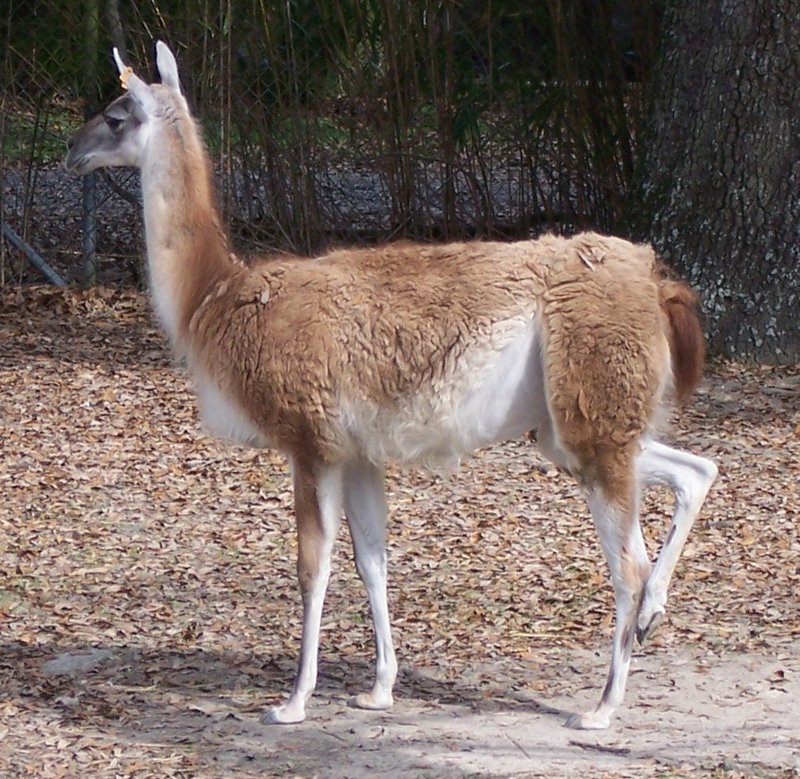Guanaco
From Wikipedia, the free encyclopedia
[Photo] Guanaco (Lama guanicoe) at Audubon Zoo, New Orleans, Louisiana, USA. Date: 13 Feb 2005. Author: Geoffrey J. King http://commons.wikimedia.org/wiki/User:Gjking
The guanaco (Lama guanicoe) is an elegant, fine-boned camelid animal that stands approximately 1.06 m (3 ft 6 in) at the shoulder and weighs about 90 kg (200 lb). Like the llama, the guanaco is double coated with a coarse guard hair and soft undercoat, which is even finer and thus more highly prized than that of the alpaca, although they carry far less of it. The guanaco's soft wool is only lesser to that of the vicu??a, a close relative. The colour varies very little, ranging from a light brown to dark cinnamon and shading to white underneath. Guanacos have grey faces and small straight ears. They are extremely striking with their large, alert brown eyes, streamlined form, and energetic pace. They are particularly ideal for keeping in large groups in open parklands.
Similarly to llamas, alpacas and vicu??as, guanacos have thicker skin in their necks. Used for fighting in competition for mates, they have thickened to be more protective. Bolivians use the necks of these animals to make shoes, flattening and pounding the skin to be used for the soles. After this long process of condensing and compressing, the skin is very hard. If it is not done properly it can soak small amounts of water and be slippery to walk on. The young guanacos are named chul??ngo(s) throughout South America.
The guanaco is common to South America: in Bolivia, Peru, Ecuador, Chile and Argentina. They are most numerous in Patagonian regions of Chile & Argentina, in places like the Torres del Paine National Park. Bolivian Indians have been known to raise guanacos to help them regaining their population stability. A guanaco's average life span is 20-25 years.
When the Europeans first arrived in South America, there were an estimated half billion guanacos, but current estimates place their numbers at 500,000.
Guanacos can run with a speed of 56 km (35 mi) per hour. The running is important for their survival, because in the open places where they live there is no place to hide.
Guanaco is also a colloquial term that people from El Salvador and their descendants use to refer to themselves. This usage is unrelated to the animal.
http://en.wikipedia.org/wiki/Guanaco
| The text in this page is based on the copyrighted Wikipedia article shown in above URL. It is used under the GNU Free Documentation License. You may redistribute it, verbatim or modified, providing that you comply with the terms of the GFDL. |
|

